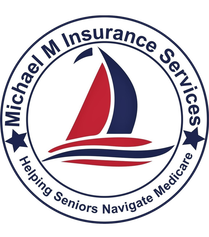Medicare Help & Enrollment Assistance in Babylon
Navigating Medicare can be confusing, but you don’t have to do it alone! As your trusted Medicare agent in Babylon, NY, I’m here to help you find the right plan that fits your needs and budget.
What Exactly Is Medicare In Babylon, NY?
Medicare is publicly funded health insurance designed to provide coverage for seniors, people with disabilities, and patients with end-stage renal disease. It operates under the Centers for Medicare & Medicaid Services (CMS) and offers a variety of healthcare services, including hospital care, medical services, prescription drugs, and preventive care. Medicare has different parts, including Part A, which covers hospitalization, skilled nursing facility care, and hospice care. Part B covers physician services, preventive care, and medical equipment. On the other hand, Part C, or Medicare Advantage, is a plan that combines Part A and Part B, and it may offer additional benefits such as dental or vision coverage. Lastly, Part D covers prescription drugs.


Solving The Medicare Part D Drug Puzzle In Babylon, NY
Part D of Medicare covers prescription drugs, one of the biggest expenses for seniors. Medicare Part D provides coverage for both brand-name and generic prescription drugs, but choosing the right Part D plan can be confusing and overwhelming. Medicare Part D is offered by Private Insurance Carriers. Medicare Part D plans are divided into several different tiers, which means different costs for different types of drugs. Each Part D plan has a formulary, which is a list of drugs covered under the plan. Medicare Part D plans have different monthly premiums, annual deductibles, and copayments or coinsurance. The monthly premiums are set by the private insurance company offering the Part D plan. The annual deductible is the amount you must pay out-of-pocket for your prescription drugs before your Part D plan starts covering the costs. Copayments are fixed dollar amounts that seniors are required to pay for their prescription drugs. Coinsurance is a percentage of the total cost of drugs that seniors are responsible for paying. Care should be taken when choosing your Part D coverage as mistakes can be expensive. Your Local Babylon, NY Medicare agent can help you choose the Part D Plan that matches your Prescription Drug needs.
Your Babylon, NY Agent Offers Medicare Advantage Plans
Medicare Advantage, Part C, combines the benefits of Medicare Parts A and B(Original Medicare) with additional coverage options. Medicare Advantage plans are offered by private insurance companies. Through Part C, beneficiaries continue to receive coverage for Hospital Care (Part A) and Medical Services (Part B), but also have the option to enroll in additional benefits such as vision, hearing, and dental coverage, as well as prescription drug coverage (Part D). Medicare Advantage Plans can come with a $00.00 Monthly Premium and there will be copays and coinsurance for all services.

Is Using A Local Babylon, NY Agent A Good Idea? Yes
A Medicare Agent is a Licensed Insurance Agent who specializes in Medicare Health Insurance planning. They work with various insurance carriers to help clients find the best plan for their needs. Agent are trained to explain Medicare benefits and options in layman’s terms, and they provide objective information to help seniors make informed decisions. They can help you navigate the complex world of Medicare and find a plan that fits your needs and budget. Your Babylon, NY Agent lives locally, is always available for questions and concerns and does not charge a fee for his services.

Medigap Plans with Babylon Agent
Medigap plans are Supplemental Insurance policies that serve as a Supplement to Original Medicare(Parts A and B). Medigap plans are specifically designed to help individuals who have enrolled in the original Medicare program to cover some of the out-of-pocket expenses. This includes deductibles, copayments, coinsurance, etc. These plans are purchased from private insurance companies, and the benefits they offer vary based on the specific plan you choose. Medigap Supplement Plans are popular because Original Medicare remains the Primary Payer and can be used in any State with any Provider that accepts Medicare. Medigap plans come with Monthly Premiums and do not include prescription Drug coverage.
2025 Medicare brochure
In 2025, Medicare will remain a cornerstone of healthcare in the United States, providing vital coverage to millions of seniors and individuals with certain disabilities. Established in 1965, Medicare has evolved to meet the changing needs of its beneficiaries and the healthcare landscape. This introduction will explore its key components, eligibility criteria, coverage options, and significance in today’s healthcare system.

